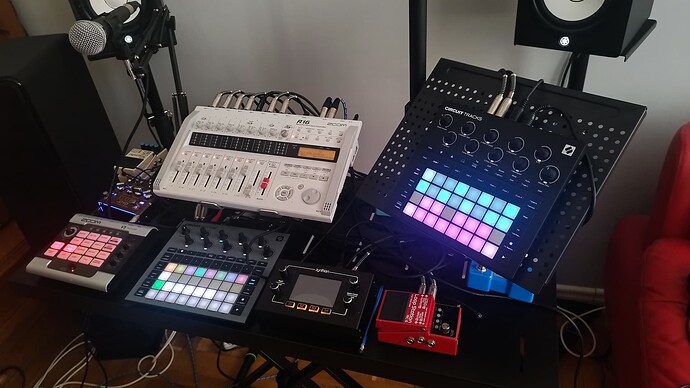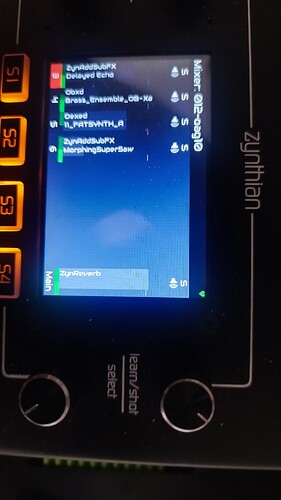Thank you for the feedback!
Both tracks were recorded on a Zoom R-16 and then mastered using an open source tool called Matchering 2.0.
My musical production is entirely DAWlees.
Mainly for practical reasons.
I find the typical DAW user interface far too cluttered and confusing, especially for folks with low vision like myself.
Additionally, I prefer the process of making music and performing with hardware.
In Máquinas Redentoras, for the guitar riffs, I have used a combination of Riffler and Guitarism (on an iPad: Guitarism is no longer available on the app store, sadly, but I purchased it back in 2011, therefore I’m still able to use it), both sampled into the Circuit Rhythm. They were then chopped up and rearranged (the Circuit Rhythm offers one of the most intuitive auto-slicing workflows).
The drum loops were programmed on another iOS app called Rock DM. As with the guitar riffs, I have sliced and rearranged them on the CR.
The Zynthian provided all the synth goodness.
If I remember correctly, I have chosen primarily ZynAddSubFx presets, modified and modulated to taste.
In “Underneath The Steel And Neon”, I have chosen the unfairly reviled Polyend Play, because it offers some neat sequencing options that are absent from the Circuit family. Namely parameter locks and “deterministic probability” (the ability to set a certain step to play every x number of cycles, in the style of most Elektron machines).
For the vocals, I rely on 2 separate physical FX chains, which I can toggle at will during a live performance using a Mackie Big Knob passive monitor controller.
Both chains start from a Zoom V3 vocal processor.
The distorted vocals will then go into a Joyo R-09 modulation pedal + Boss DD-8.
The singing vocals are routed to a Mooer E7 synth pedal (to add a little bit of artificiality to my voice) + Mooer Reverie Chorus modulation pedal (to widen the voice) + Mooer R7 X2 reverb pedal.
This is my current setup for this particular project. In the meantime I have replaced the Polyend Play with a Circuit Tracks.
![]()

